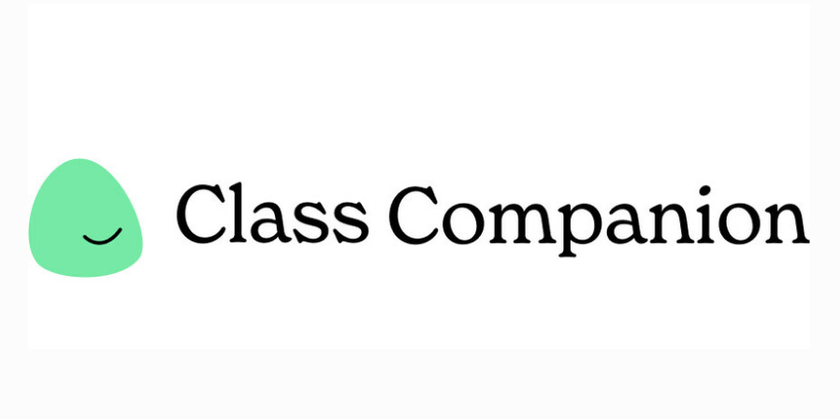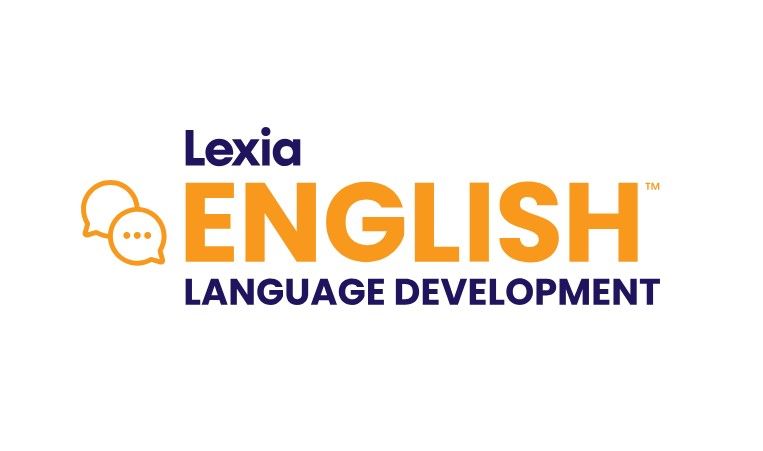Blended Learning in Action
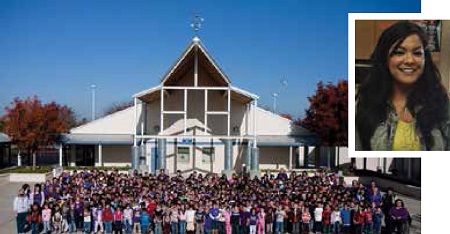
Students at Alice N. Stroud Elementary School in Modesto, California. Inset: Teacher Lindsay Nguyen. Some educators express fear about the shift to e-learning courses and whether they produce the desired results for their students. However, a recent national survey of schools working with The Virtual High School, a provider of online learning programs, found that 95 percent of the teachers, students, and administrators participating were satisfied with the online courses offered through VHS. How are other blended learning models achieving similar success around the country? Below are snapshots from schools that are making blended work.
MOORESVILLE LEADS THE WAY WITH PRINT-TO-DIGITAL CONVERSION
Mooresville Graded School District (MGSD) in Mooresville, North Carolina, is home to approximately 5,800 students attending eight schools throughout the district. The district is known nationally for its Digital Conversion initiative, under the leadership of superintendent Dr. Mark Edwards. At MGSD, every 4th-through 12thgrade student is issued his or her own MacBook to take home throughout the school year, and every 3rd grader has a laptop to use at school.
Mooresville Graded School District has been on the leading edge of digital conversion since 2007.
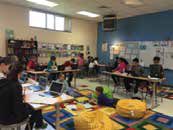
With this conversion came a growing need for quality digital resources, which led the district to partner with Knovation to implement solutions that helped teachers and students easily find, manage, and use digital content for learning. Currently, Mooresville uses icurio to access Knovation’s collection of professionally-evaluated, standards-aligned digital resources. As the Digital Conversion evolved, MGSD achieved a level of technology integration and usage that takes technology to the next level in terms of preparing kids for graduation and to be productive citizens. “This takes on a lot of different forms, but we look at graduating kids that are creative, collaborative, critical thinkers, work with others, and communicate well,” says Dr. Scott Smith, chief technology officer for MGSD.
Differentiating instruction is key, and icurio helps teachers achieve that goal. “I find resources that meet different students’ needs based on readability level and ratings, and organize them in folders that can be shared with students. I use all the research and differentiation tools icurio provides me. This way I know my students won’t struggle or get bored,” says Brenda Martin, a 4thgrade teacher.
Dr. Edwards is optimistic about the future ahead at MGSD. He says, “The students can see the relevance to their future. They get excited about school and that’s huge!”
BLENDING PRINT & ONLINE
This past school year, Lindsay Nguyen, a 3rd-grade teacher at Alice N. Stroud Elementary School in Modesto, California, learned she would have a chance to pilot Total Motivation, Mentoring Minds’ hybrid print-and-online supplemental curriculum solution that’s aligned with Common Core State Standards. Nguyen and her fellow teachers were given the opportunity to use Total Motivation to supplement their math and English/language arts (ELA) curriculum in preparation for the Smarter Balanced Assessment Consortium Test.
“What was most appealing to me were the resources and lesson plans presented in Total Motivation,” said Nguyen. “I loved that I could put my students into small groups at all learning levels, from the struggling learners to the more advanced learners, and everyone was able to participate in the activity. Since our access to computer carts was limited to a few hours a day, it was great to have the print edition as well, so we were able to transition between online and offline without missing a beat,” she said.
“The group activities in particular allowed the students to think in a much deeper, much more rigorous way,” Nguyen said. “The multitude of tools that Mentoring Minds provides to teachers is fantastic, as it really helps you to be able to gain a more holistic understanding of which students need more individual attention on an assignment.”
BLENDED LEARNING PUBLIC CHARTER SCHOOL OUTPERFORMS DISTRICT ON STATE TESTS
College Park Academy Principal Bernadette Ortiz-Brewster and two of the students from the blended learning charter middle school. College Park Academy (CPA), a public charter school in Prince George’s County, Maryland, uses a blended learning model to prepare students for the top colleges and universities in the nation. The school opened its doors at the start of the 2013–2014 academic year and provided students with leased laptops and a 100-percent digital curriculum. Although the entire school uses the Connexus platform, teachers are given the freedom to manage their blended learning classrooms as they see fit.
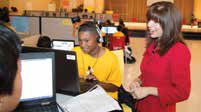
For example, language arts teacher and department head Joshua Young combines flipped learning with a rotation model. “With the technology and the online curriculum that our kids have, it’s wonderful that they are able to work outside of the classroom and at their own pace,” he says. “Students are doing rote memorization, taking notes, or reading outside of the classroom, and then when they come into the classroom, they’re doing more extended projects or discussions.”
The online curriculum has given teachers time to create deeper, more innovative content. Science teacher Herbert Williams explains, “Everything is on the computer— the lessons are there, quick checks, discussions, and unit tests. At my last school, I had to do all of that myself. Now I review the whole lesson that I have to teach and take something that is related to the lesson, do some research on it, and develop an activity to reinforce the lesson and content.”
During its first year, CPA’s scores exceeded those of Prince George’s County Public Schools (PGCPS) on the Maryland School Assessment (MSA). On the reading test, the percentage of 6th-and 7th-grade students scoring proficient or advanced was 95 percent and 93 percent, respectively, compared to 78 percent and 71.5 percent for PGCPS. On the mathematics test, the 6thand 7th-grade CPA results were 76.3 percent and 79.5 percent, respectively, compared to 56.8 percent and 47.8 percent for PGCPS.
CPA is expanding to include high school. In 2014–2015, it added an 8th grade, and it plans to add a grade a year until it reaches grade 12.
BLENDED LEARNING MEETS DIVERSE STUDENT NEEDS
Fayetteville High School assistant principal Denise Hoy joins some of the school’s students. When Dr. Denise Hoy became assistant principal of Fayetteville, Arkansas, High School in 2010, one-third of the total school population of 1,800 was failing one or more classes by the end of the fall semester. Many of these classes were required for students to graduate. To address this issue, Dr. Hoy applied lessons she had learned in the 10 years she was a special education teacher/designee at Fayetteville. She focused on unique student needs and also leveraged technology to provide more flexible and targeted instructional solutions and increase the graduation rate. With the help of Odysseyware, Fayetteville implemented programs to help students stay on top of their coursework, recover credits when necessary, and earn first-time credits. Odysseyware’s course customization tool has also been used to create 30 different courses for students with language deficiencies and disabilities. By providing this flexibility and targeted instruction, Agee-Lierly Life Preparation Services (ALLPS) students recovered 736 credits between August 2014 and March 2015. As of April 2015, 29 students have graduated early.

VIRTUAL SPEECH THERAPY
A Synergy Academies student uses a virtual speech therapist. Synergy Academies, a charter school in Los Angeles, California, “accepts every student who walks in the door with open arms and a big smile,” says Sommer Jones, director of special education and student services at Synergy Academies. While charter schools that operate under the Los Angeles Unified School District (LAUSD) have options allowing LAUSD to run parts or all of their special education programs, reducing both liability and risk, Synergy chose to be wholly responsible for providing any special education services a student may need. While this enabled the charter school to have more control and flexibility, a local shortage of highly qualified, certified speech-language pathologists (SLPs) turned this situation into a high-stakes challenge.
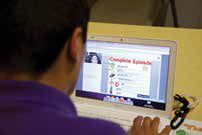
After hearing about PresenceLearning’s online speech therapy through the LAUSD Charter Operators Program, Jones pursued a pilot of the services in the fall of 2013. While observing several online therapy sessions, Jones saw that the online therapy was very well planned and tailored to the students’ specific needs, and that the students were benefiting from doing academic work during the therapy sessions. Synergy Academies now has dozens of middle-and high-school students using PresenceLearning and making progress on their IEP goals. In addition, all student IEP meetings are up to date and the district has virtually no compensatory time backlogged. “Watching the online therapy sessions, it is amazing to see just how engaged the students are,” says Jones. “We can tell they are doing good work because the online SLP has a great rapport with students and students are so at ease with her.”
INCREASING LITERACY WITH ONLINE RESOURCE
A newly renovated blended learning space at Des Plaines Community Consolidated School District. Dr. Jane Westerhold, superintendent for Des Plaines Community Consolidated School District 62 in Illinois, first introduced myON to the district as a literacy resource to provide greater access to engaging books for students in K–8. While myON was the superintendent’s initiative, it was the responsibility of Dr. Jan Rashid, assistant superintendent for instructional services, to manage the implementation. Through their collaboration, the scope was broadened and myON is now used across the curriculum. “As we interacted more with myON, we saw that it could be more widely utilized in the classrooms as a supplemental resource to increase rigor in the content areas,” Dr. Rashid explained. “In addition, reading digital text is different from reading print text, and is a skill that needs to be practiced. Embedding that practice into what the students do every day is important, not just for testing and assessments, but for their future success in life.”
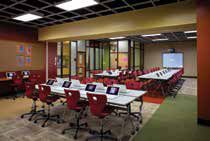
ATHENS CITY SCHOOLS TAKES LEAD IN PROVIDING VIRTUAL SCHOOL OPTION TO ALABAMA STUDENTS

In response to a bill recently passed by the Alabama State Legislature requiring virtual options for high-school students by the 2016–2017 school year, Athens City Schools will provide a new virtual education option for students across the state. Opening in time for the 2015–2016 school year, the Athens Renaissance School (ARS) is a full-time online and blended public school for students in grades K–12 who can benefit from a highly flexible, personalized learning model.
For the new school, Athens City Schools partnered with Fuel Education for its catalog of standards-based online courses, which will be taught by both Athens City Schools teachers and FuelEd’s certified teachers. In addition, FuelEd’s technology platform and tools allow administrators, teachers, students, and their families to view data in real-time and track each student’s progress, enabling teachers to customize lessons and differentiate instruction. ARS will also have a blended option so that students can visit the school’s dedicated facility to work face-to-face with teachers.
“The Alabama State Legislature, superintendent, and Board of Education recognize that there are thousands of students who can benefit from a personalized learning environment that is outside of the traditional school model,” says W. L. “Trey” Holladay III, Superintendent of Athens City Schools. “Our goal for Athens Renaissance School is to leverage the power of online and blended learning to provide more of these students, and their parents, the opportunity to find the very best model in which they can excel academically.”
BLENDED LEARNING AND COMMON CORE
A screenshot from i-Ready Diagnostic & Instruction. At Thomas Russell Middle School in Milpitas, California, “Every day should be a blended day,” says principal Damon James.
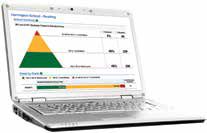
With a student-to-computer ratio of nearly 2:1, students are familiar with technology and understand it can be a powerful learning tool. Each team of teachers has a cart of Chromebooks to use, in addition to school computer labs. Knowing that hardware is only a small piece of the puzzle, however, James looked to Ready Common Core and i-Ready Diagnostic & Instruction to provide teachers and students the data, instruction, and support they needed.
Teachers at Thomas Russell appreciate that they can “view data from i-Ready immediately, instead of having to wait 2–3 weeks,” and that the data provide them with a clear understanding of what to do next. Armed with data they’re confident in, teachers can individualize student instruction with the Ready books and the multi-level online resources available in the Teacher Toolbox.
“Ready was approachable for low-performing students,” says James. “It taught the concepts in a way that they could understand and allowed students to progress at their own pace.”
CATCHING STUDENTS BEFORE THEY FALL
Students use DreamBox Learning Math for three 25-minute sessions during the week. At Dunbar Elementary School in Glen Ellen, California, more than 65 percent of 2nd graders and 40 percent of 3rd-grade math students were not performing at grade level. To address this issue, teachers Marian Rasmussen and Terry Roberts co-created the Grade Level Proficiency Project (GLPP), with the goal of closing the achievement gap as early as possible.
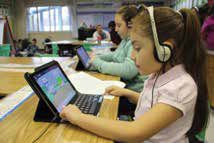
The new GLPP model uses technology to close gaps in math and language arts by implementing 21st-century Common Core State Standards, 1:1 blended learning strategies, and in-class modeling and training for both teachers and students. All of the students in 2nd and 3rd grade use DreamBox Learning Math for three 25-minute sessions during the school week on their iPad minis, laptops, or desktop devices. Professional development centered on helping teachers to maximize the potential of the software, including comprehensive knowledge of the reporting capabilities. Another aspect of GLPP is supporting elementary teachers who may not have a strong foundation in math.
The independent math assessment Let’s Go Learn documented strong progress from January 2014 to May 2014 for students in the GLPP. Ninety-one percent of second graders were at 2nd-or 3rd-grade level (up from 65 percent) by the end of this period, and 93 percent of 3rd-graders were at 3rd-or 4thgrade level (up from 43 percent).
Principal Melanie Blake sums up her assessment of the program as follows: “In my 31 years in education, this is one of the most exciting programs in which I have been involved.”
ATLANTA CHARTER SCHOOL EXPANDS INSTRUCTIONAL SERVICES OFFERING WITH ONLINE COURSEWARE
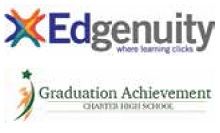
The Graduation Achievement Charter High School (GACHS) in Atlanta, Georgia, is a virtual public charter high school that serves students in grades 9–12. The school’s mission is to provide historically underserved students with a flexible and highly individualized virtual school experience. The school selected Edgenuity’s Instructional Services, which include standards-aligned courses taught by state-certified virtual instructors, as the school’s primary learning solution.
“As a virtual school, GACHS prides itself on identifying and offering top-quality online curriculum and instruction to our students,” says Dr. Monica Henson, superintendent and chief executive officer at GACHS. “Edgenuity was the perfect fit for GACHS because its Instructional Services offering provides best-in-class online instruction, remediation, and motivation, ensuring that our unique student body will receive the personalized help they need, when they need it.”
ALABAMA DISTRICT INCREASES GRADUATION RATE WITH CREDIT RECOVERY PROGRAM
The graduation rate at Putnam County Schools in Alabama for 2014 was 92%. Administrators believe an online credit recovery program helped them achieve this impressive goal. Putnam County Schools partnered with Compass Learning in 2008 to help identify learning gaps, to generate personalized learning paths to close those gaps, and to help students establish a pace to finish on time and graduate with their class. Since then, digital credit recovery allowed one high school within Putnam County—in the space of a single academic year—to increase its graduation rate from 86% to 94%.
DIGITAL TEXTBOOKS HELP DISTRICT EDUCATORS PROVIDE STUDENTS WITH PERSONALIZED LEARNING EXPERIENCE
A sample from Discovery Education’s Techbook. In 2013, Connecticut’s Meriden Public Schools (MPS) embarked on an ambitious plan to transition from teacher-led instruction to student-led education and to create more blended learning opportunities for students. This effort is being shaped by the school system’s comprehensive educational technology plan for 2015–2020, which guides the implementation of technologies that build meaningful learning experiences for students, encourage student collaboration, and promote flexible learning paths. Key components of the district’s technology strategy include further integration of educational technology into all curriculum areas, more systematic technology-focused professional development opportunities for faculty and staff, and the exploration and implementation of additional cost-effective technology solutions.
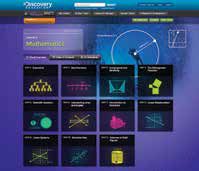
To support this strategy, MPS has adopted BYOD guidelines district-wide and has implemented 1:1 digital environments in its high schools. In addition, beginning this school year, high-school educators and students will receive access to Discovery Education’s Math, Social Studies, and Science Techbooks, and middle-school science teachers will begin integrating the Science Techbook into classroom instruction. The Techbook series includes professional development and features a comprehensive design that places model lessons, student activities, and assessments at teachers’ fingertips. Techbooks are platform-neutral and can be used in 1:1 or 1-to-many configurations and in any instructional environment.
“We are pleased to continue our long-term partnership with Discovery Education, as it has been at the core of our effort to build the student-centered learning environments that lead to student success in college, careers, and civic life,” says Susan Moore, supervisor of blended learning at Meriden Public Schools.
FOUR FACTORS FOR BLENDED LEARNING SUCCESS
A recent white paper by Lexia Learning identified the following four elements that are critical for implementing a successful blended learning program:
#1: The technology tool should adapt to each student’s abilities
One of the core objectives of a blended learning model is to personalize instruction to meet the specific needs of each student. However, if the school chooses a technology-based curriculum that does not include an element of scaffolding and adaptive technology, student learning will be no more personalized than the traditional “one size fits all” instruction. Pay particular attention to the instructional “branching” that your instructional program provides. Some products may state that they provide “adaptive assessment,” but they may not actually provide “adaptive instruction.” Such programs place students at the proper instructional level, but once students begin the instructional component of the program they are all subjected to the same “one size fits all” instruction.
#2: The instructional program should capture student data
While structured practice or skill instruction delivered online can be beneficial in a blended environment, far too often these online activities are occurring without the data being captured—or they require a separate test event. If a blended approach is intended to help each student accelerate her or his skill development, the technology tools must record student progress at a fairly granular level. When the right technology tools are used, the student experience is monitored in real-time—without administering a test. Teachers can view data showing which students have completed each skill area and which students have encountered an obstacle and require direct instruction, either individually or in small groups. These data inform the instructional plans in the classroom, helping the teacher to be targeted and time-efficient in focusing on the students most in need of help.
#3: The program should recommend next steps for the teacher Schools can dramatically improve their levels of teacher effectiveness if they implement technology that provides recommendations for teacher intervention—connecting personalized learning, embedded assessment, and teacher-led instruction.
#4: The program should provide resources for teacher-led instruction While technology-based components help to identify the students who are struggling and the specific skills with which they have difficulty, teachers are sometimes left to plan the curriculum and choose the appropriate materials to help these students. The final step in ensuring an effective blended learning implementation is to select instructional resources that help the teacher to connect performance data to instructional strategies.
Tech & Learning Newsletter
Tools and ideas to transform education. Sign up below.


